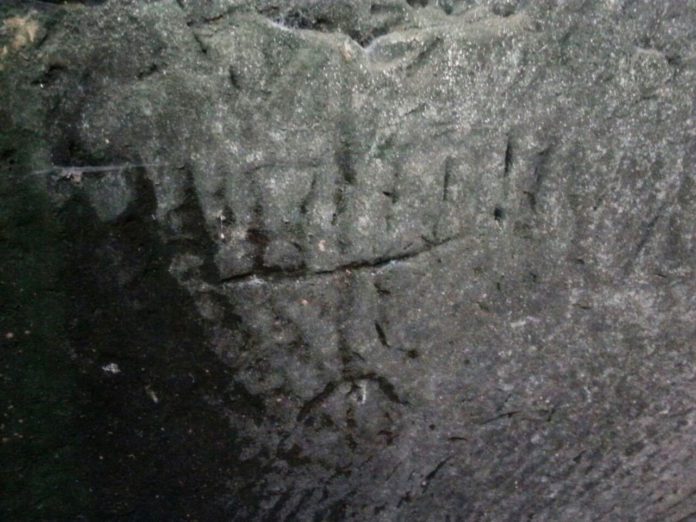Hikers Find Temple-Era Etching of Menorah Near Bet Shemesh
Israeli hikers unearthed a water cistern in the Judean foothills last weekend engraved with a seven-branched menorah and a cross (candelabra) out of chalk bedrock.
The etchings were discovered by by hikers Mickey Barkal, Sefi Givoni and Ido Meroz, all members of the Israel Caving Club. “We heard there are interesting caves in the region. We began to peer into them, and that’s how we came to this cave, which is extremely impressive with rock-carved niches and engravings on the wall. Just before we were about to return we suddenly noticed an engraving that at first glance seemed to be a menorah,” said Ido Meroz.
The menorah engraved on the wall of the cave has a three-foot base, and it evidently portrays the menorah that stood in the Second Temple. A cross was engraved near the menorah. Another engraving was found on the side of the cave which seems to resemble a type of key that is characteristic of antiquity. Alongside the cistern is a columbarium with dozens of niches that were used to raise doves, a staple of the sacrificial rite in the ancient Temple.
“There are buildings and hiding caves dating to the time of the Bar Kokhba rebellion (second century CE) at the site as well as buildings that date to the Byzantine period. But it is rare to find a wall engraving of a menorah, and this exciting discovery, which was symbolically revealed during the Hanukkah holiday, substantiates the scientific research regarding the Jewish nature of the settlement during the Second Temple period,” said Sa’ar Ganor, Ashkelon District Archaeologist at the Israel Antiquities Authority.
“The menorah was probably etched in the cistern after the water installation was hewn in the bedrock – maybe by inhabitants of the Jewish settlement that was situated there during the Second Temple period and the time of Bar Kokhba – and the cross was etched later on during the Byzantine period, most likely in the fourth century CE,” Ganor added,
The menorah is a distinctly Jewish symbol of the Second Temple period. To date, only two engravings of menorahs are known in the region of the Judean Shephelah: one on oil press at Bet Loya where the same style menorah is depicted, and the other in a burial complex in the vicinity of Bet Guvrin. Other menorahs are portrayed on clay lamps from Beit Natif.






